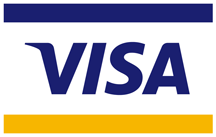We use cookies to make your experience better. To comply with the new e-Privacy directive, we need to ask for your consent to set the cookies. Learn more.
HELMET SIZING INFORMATION
The Designer Helmets Guide to Buying a Motorcycle Helmet
It’s really important to wear a properly fitting motorcycle helmet!
A poorly fitting helmet will be uncomfortable, definitely noisier and potentially dangerous. If it’s too small, it can give headaches and discomfort. If it’s too big, it may move around when riding. Either way, this is bad news for the rider.
A motorcycle helmet simply will not protect or perform as designed if it doesn’t fit correctly. So, make sure you order the correct size.
Measuring Your Head
Before choosing a helmet, we recommend measuring your head to establish the size of helmet you require. Everybody’s head is different, and every brand and helmet style is different.

Using a soft tape measure, measure around the circumference of your head (the widest part of your head), across the forehead slightly above the eyebrows and ears and around the back of your head.
Then you can check the measurement against the manufacturers sizing chart.
Helmets are available in a wide range of sizes. If your head measurement for example 58.5cm and a Medium is 57-58cm and a Large is 59-60cm, we would suggest going for the smaller size (in this case Medium) as the interior will compress over time.
PLEASE NOTE: Medium in one brand, may be a totally different size and fitting in another brand. Don’t assume that they will be the same fitting.
Advice on Trying your Helmet On
When your helmet arrives, read any advice sheet in the box first and then try it on.
- Focus on your head size (crown fit) measurement first, e.g. the area contacted by a baseball caps' band.
Do not be concerned with facial fit at this stage.
When you can't get the helmet past your cheeks or jaws, do not think it's too small and reach for a bigger size.
The helmet must fit your head! - Comfort is all important!
For the most comfort the interior must fit snugly all around the crown of your head.
You should feel some pressure at all the contact points around the interior perimeter.
Too much pressure could become uncomfortable in the future. - Feel how close the helmet is around your cheeks; make sure there are no gaps.
Then move up to your temples and forehead, you don’t want to be able to get your fingers in there.
And finally, check the back of the crash helmet; if it’s snug then it’s the right size for you. - Roll the helmet backwards and forwards and wiggle it forwards and backwards.
You want a tiny bit of movement but not enough that the helmet could lift or come off while riding. - Do up the strap and tighten it until you feel it is quite tight but not uncomfortable on your neck.
- Look in a mirror. How does it fit on the cheeks?
If you can fit a couple of fingers between your cheek and the helmet cheek pads then it is too big, if it is pressing so tight your cheeks are between your teeth and you can't talk, then it may be too small. - PLEASE NOTE: cheek pads do compress over time so they can 'bed in' to a certain extent.
If you are happy with the fit, leave the helmet on your head for a reasonable length of time to ensure it is not causing discomfort in places that were not immediately apparent.
If a helmet is really pressing on your forehead, this can sometimes cause a headache over time so it may be worth trying another size or brand.
Please feel free to contact us sales@designerhelmets.com for more information.




